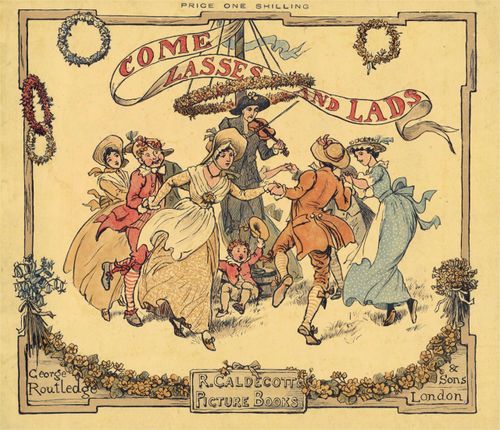Annotation:Round the Maypole (1): Difference between revisions
No edit summary |
m (Text replacement - "Century Gothic" to "sans-serif") |
||
| (One intermediate revision by one other user not shown) | |||
| Line 7: | Line 7: | ||
---- | ---- | ||
<div style="page-break-before:always"></div> | <div style="page-break-before:always"></div> | ||
<p><font face=" | <p><font face="sans-serif" size="2"> | ||
<div style="text-align: justify; direction: ltr; margin-bottom: 90px; margin-left: 70px; margin-right: 120px;"> | <div style="text-align: justify; direction: ltr; margin-bottom: 90px; margin-left: 70px; margin-right: 120px;"> | ||
<br> | <br> | ||
'''ROUND THE MAY-POLE [1].''' English, Country Dance & Jig (6/8 time). B Flat Major. Standard tuning (fiddle). AABB. The melody is unique to Charles and Samuel Thompson’s third country dance collection (London, 1773). Alfred Moffat ('''Dances of the Olden Time''', 1912, p. viii), writes: | '''ROUND THE MAY-POLE [1].''' English, Country Dance & Jig (6/8 time). B Flat Major. Standard tuning (fiddle). AABB. The melody is unique to Charles and Samuel Thompson’s third country dance collection (London, 1773). Alfred Moffat ('''Dances of the Olden Time''', 1912, p. viii), writes:[[File:maypole.jpg|500px|thumb|right|Randolph Caldecott's 'Come Lasses and Lads' (1884); maypole dancers sans streamers.]] | ||
<blockquote> | <blockquote> | ||
''The primitive instinct with dancers, where no figures are provided, is to dance round an object. The'' | ''The primitive instinct with dancers, where no figures are provided, is to dance round an object. The'' | ||
| Line 23: | Line 23: | ||
<div class="noprint"> | <div class="noprint"> | ||
== Additional notes == | == Additional notes == | ||
<p><font face=" | <p><font face="sans-serif" size="2"> | ||
<font color=red>''Source for notated version''</font>: - | <font color=red>''Source for notated version''</font>: - | ||
<br> | <br> | ||
<br> | <br> | ||
</font></p> | </font></p> | ||
<p><font face=" | <p><font face="sans-serif" size="2"> | ||
<font color=red>''Printed sources''</font> : - Thompson ('''Compleat Collection of 200 Favourite Country Dances, vol. 3'''), 1773; No. 41. | <font color=red>''Printed sources''</font> : - Thompson ('''Compleat Collection of 200 Favourite Country Dances, vol. 3'''), 1773; No. 41. | ||
<br> | <br> | ||
<br> | <br> | ||
</font></p> | </font></p> | ||
<p><font face=" | <p><font face="sans-serif" size="2"> | ||
<font color=red>''Recorded sources'': </font> <font color=teal> - </font> | <font color=red>''Recorded sources'': </font> <font color=teal> - </font> | ||
</font></p> | </font></p> | ||
Latest revision as of 19:14, 6 May 2019
X:1 % T:Round the May-Pole [1] M:6/8 L:1/8 B:Thompson’s Compleat Collection of 200 Favourite Country Dances, vol. 3 (London, 1773) Z:Transcribed and edited by Fynn Titford-Mock, 2007 Z:abc’s:AK/Fiddler’s Companion K:Bb B>cB d2f|B>cB d2f|bag fed|cdB AGF| G>cB d2f|B>cB d2b|agf cf=e|f3 F3:| |:f2f f2g|_agf edc|e2e e2f|gfe dcB| BFB dBd|fdf bfe|dcB F>BA|B3 B,3:||

The primitive instinct with dancers, where no figures are provided, is to dance round an object. The object might be a captive, and altar, or other sacred emblem. Perhaps this altar or emblem might be decorated with a trophy taken from the enemy, and we may thus look upon the Maypole with its garlands and streamers as an embodiment of this emblem, and the dance round it as a survival of the primitive usage. The same tradition is also found in children's ring games...
